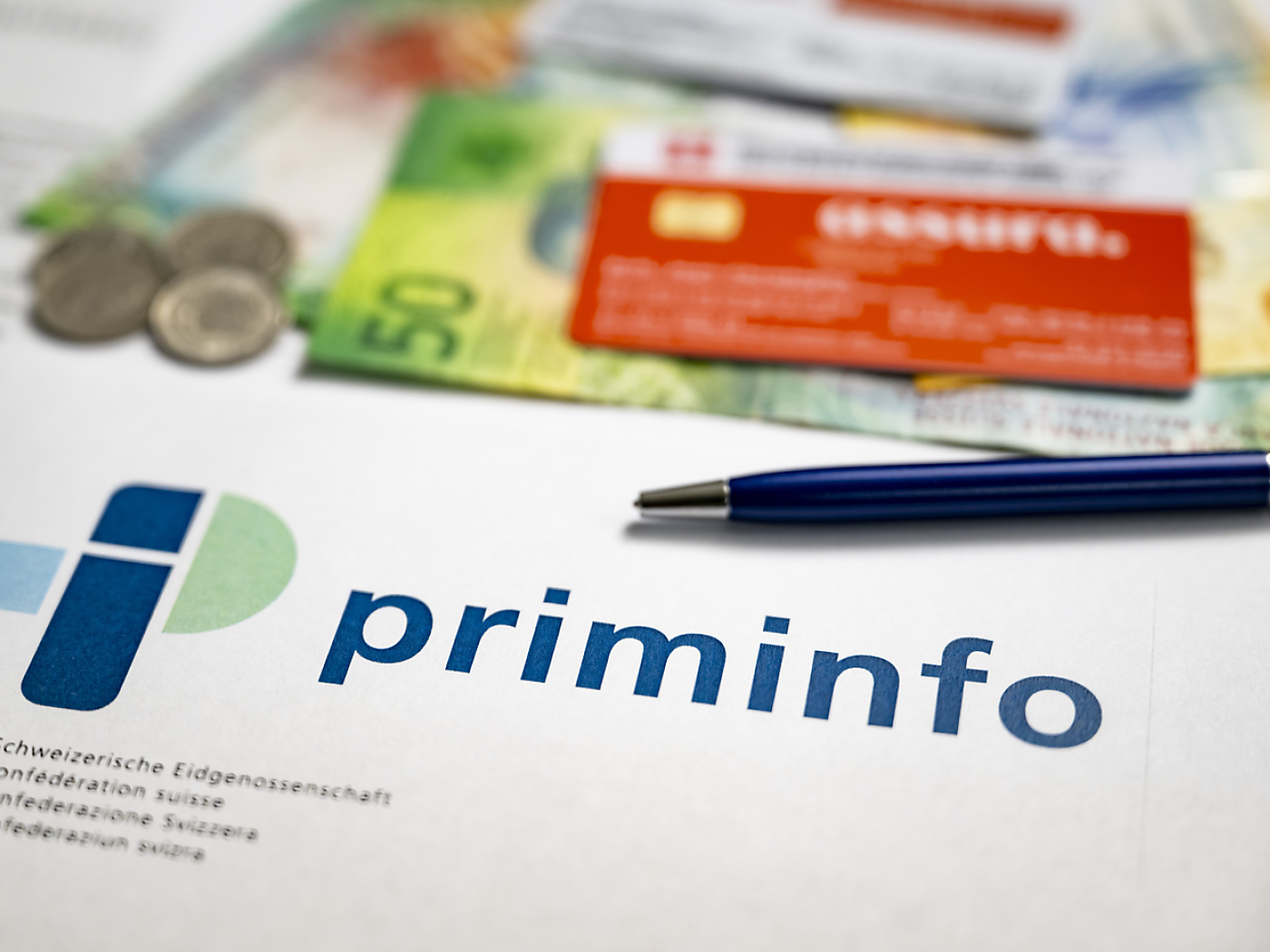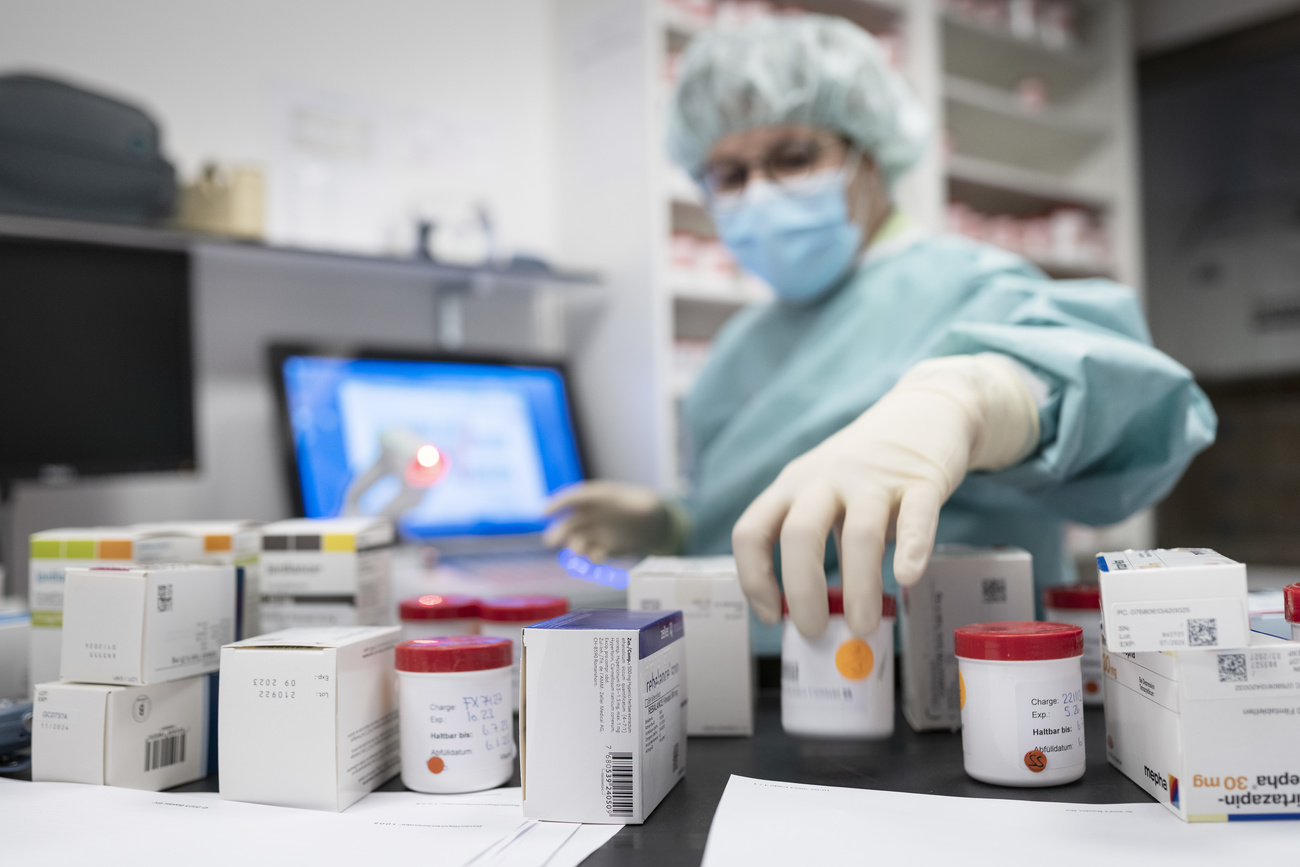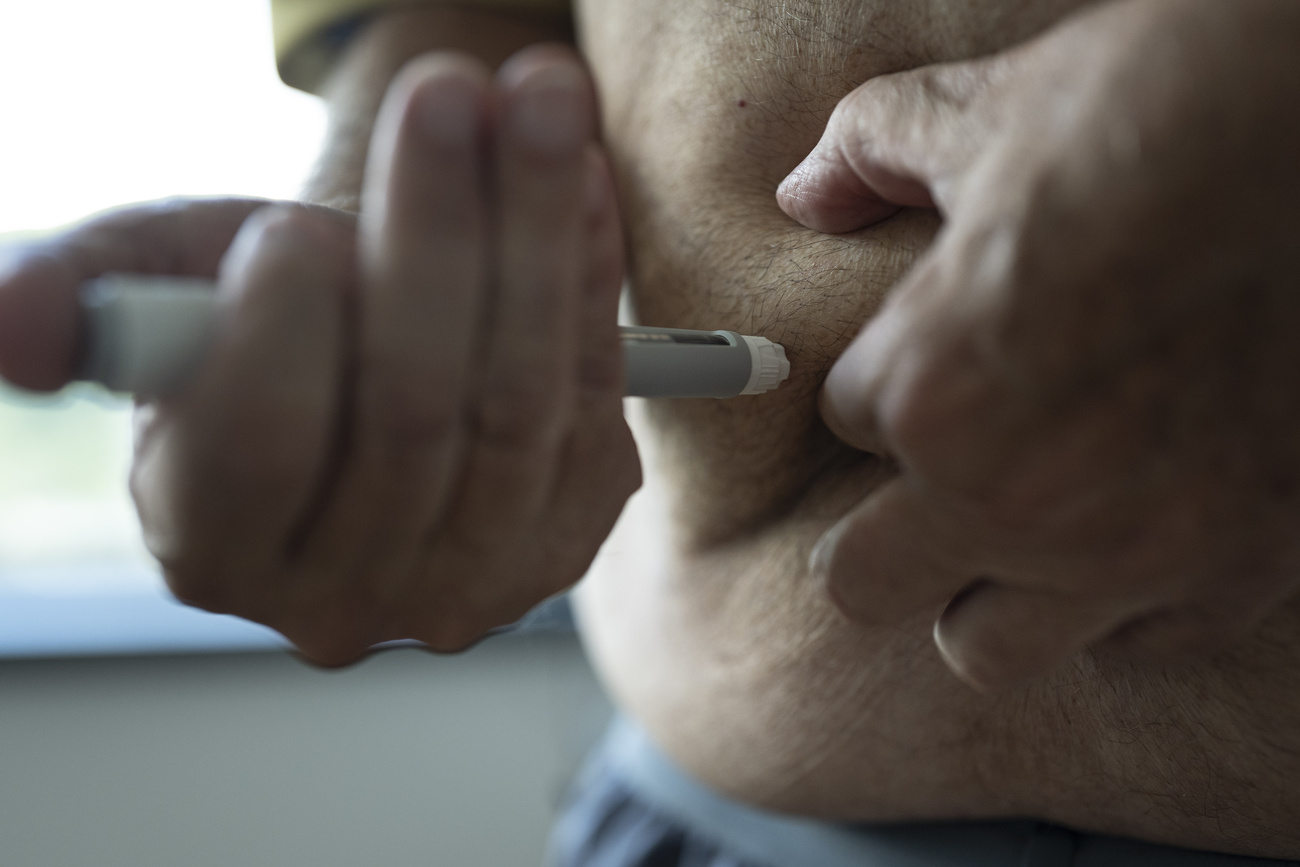
Swiss women forced to pay for hormone therapy after price dispute

A well-known brand of hormone replacement therapy, Estradot, will no longer be covered by insurance in Switzerland. The reason: the health authorities and the drugmaker couldn’t agree on a price.
In September, Simone Kobler, a gynecologist specialised in women’s hormonal health in northern Switzerland, received some frustrating news. Estradot, the oestrogen replacement therapy in the form of a transdermal patch, which is used by millions of women around the world to manage menopausal symptoms, would no longer be covered by Switzerland’s compulsory health insurance.
For those patients with supplementary insurance, the medicine may still be partially reimbursed. For all others, they would need to pay out of pocket. One pharmacy in Bern quoted a price of CHF40 ($49.40) for a 24-pack (75mg) of Estradot, which lasts 12 weeks. Among patients, which include women of different ages as well as transgender individuals, many take hormone-replacement therapy (HRT) for more than two years.
“It is tragic that a drug that can contribute so much to women’s health by, for example, preventing the risk of osteoporosis and other organ damage, is simply being cancelled and nobody seems to care,” Kobler told Swissinfo in an email. “This means people will have to pay for it themselves, which is impossible for young people in particular.”
The drugmaker, Sandoz, which has its headquarters in Basel, said it had “no choice” but to remove Estradot from the Specialities ListExternal link (Switzerland’s list of insured medicines) on September 1 because of rising costs of raw materials and production. This made Estradot “no longer cost-effective at the prices prescribed on the Specialities List,” Danja Spring, who heads media relations at Sandoz Switzerland, told Swissinfo.
Estradot isn’t an isolated case in Switzerland or globally. Price disputes between health authorities and drugmakers are increasingly common. Swissinfo recently reported on Basel-based pharma giant Roche’s decision to remove a new cancer drug from the list.

More
The high stakes fight over drug prices
The Federal Office of Public Health (FOPH) sets prices based on a comparison with prices in seven reference countries and similar products. It reviews these prices every three years, and in many cases, will lower themExternal link.
In 2023 health authorities lowered the price of Estradot by about CHF2 according to a list of price changes published by health authorities. The ex-factory price, which is the price paid to Sandoz, for a 24-pack of Estradot patches was set at CHF19.31 but was reduced to CHF17.41. Adding distribution costs and the value-added tax, the final price was set at CHF35.35.
Menopause is defined as 12 consecutive months without monthly menstruation. This means that the ovaries stop releasing eggs for fertilisation.
Ovarian function begins to decline long before menopause. In some cases, this can be ten years earlier. This transition time is called perimenopause. The time after menopause is called postmenopause.
The global average age for menopause is between 45 and 55, according to the World Health OrganizationExternal link.
Sandoz submitted a request for a price increase to the federal health authorities in November 2024. But authorities rejected the proposal on the grounds that, according to Sandoz, there are alternative dosage forms on the market, namely gel or vaginal tablets, with the same active ingredient.
In a statement to Swissinfo, a spokesperson from the FOPH said that it “is not permitted to comment further on the content of ongoing or completed requests”.
However, it said that the price for a 24-pack was between CHF12.01 and CHF36.03 in the reference countries when the review was done. “The prices requested by Sandoz in its price increase application were higher than the prices in the most expensive reference country,” wrote the spokesperson.
The impact
Sandoz’s decision to remove Estradot comes as demand for HRT, which typically includes oestrogen or a combination of oestrogen and progesterone, is surging. There is growing evidence of its benefits for managing menopausal symptoms such as poor sleep, cognitive decline and hot flashes as well as preventing osteoporosis and improving cardiovascular health.
As people live longer, the number of postmenopausal women is growing. In 2021, women aged 50 and over accounted for 26% of all women and girls globally. This was up from 22% ten years earlier, according to the World Health Organization.
Oestrogen is a category of sex hormones responsible for the development and regulation of the female reproductive system. During perimenopause and menopause, a woman’s ovaries produce less oestrogen and progesterone, leading to fluctuating, and then permanently, lower levels of these hormones. The fluctuation of women’s hormones during this period leads to symptoms such as hot flashes and mood swings, among others.
Hormone replacement therapy (HRT), which typically includes oestrogen or a combination of oestrogen and progesterone, was widely used up until 2002 when a study from the United States suggested HRT could increase the risk of heart disease, stroke and breast cancer. Researchers re-visited the study beginning around 2005, revealing flaws in its methodology and a more favorable risk-benefit profile for HRT. Today, the literatureExternal link suggests that HRT can be beneficial for women within ten years of menopause. This is echoed by medical expertsExternal link in Switzerland.
In Switzerland, there are over 1.5 million women between the ages of 40 and 65 who are potentially in peri-or postmenopause. A studyExternal link of around 2,500 women aged 30-67 published in September 2025 and supported by Inselspital, the largest hospital in Bern, found that 33% of women reduced, quit or took a break from work due to menopausal symptoms.
It is unclear how many women in Switzerland are taking HRT, but Kobler said demand for it has risen in the last few years, and that the number of requests for consultations at her gynecological practice far exceeds her capacity.
In England, HRT use rose by 47% between 2021-2022 and 2022-2023, according to the UK National Health SystemExternal link. Over the same period, the number of patients prescribed HRT grew by 29%. The use of menopausal HRT in SwedenExternal link increased among women under 60 from 2017 to 2021.
Kobler adds that there are specific cases where there is an urgent need for HRT, such as women whose ovaries have ceased to function or whose ovaries had to be removed due to a breast cancer gene. Some young women who don’t produce hormones for genetic reasons or have a history of illness like anorexia are also prescribed oestrogen to induce puberty.
Although there are other products, such gels or sprays, that deliver oestrogen and are available on the Swiss market, Kobler says that Estradot is very popular because it is in the form of a transdermal patch that is replaced twice a week. This makes it easier to control dosage and for many women, it’s more convenient than applying a gel daily.
“For many women, adolescents, and transgender people, Estradot is an essential therapy, particularly because of its precise, continuous, and well-tolerated transdermal application,” said Kobler.
She added that the people who will be hardest hit by the change in insurance coverage of Estradot will be more vulnerable groups who can’t afford to pay out of pocket.
Spring at Sandoz said that they increased the factory price by around 75% as of September 1, 2025. “This is the only way we can continue to offer Estradot at a price that covers our costs,” she told Swissinfo. Sandoz is currently the only supplier of an oestrogen patch in Switzerland.
The pricing picture
Switzerland has been trying to rein in healthcare costs that have been skyrocketing over the last few years.
Pharmaceutical companies, however, argue that some of the pressure to lower drug prices has gone too far. “The gap between manufacturing costs and prices is widening…as a result, suppliers of basic care drugs are being pushed to the brink of economic viability,” said Spring. “The consequence is that drugs are cheap but unavailable.”

More
Rising healthcare costs remain the greatest concern of Swiss residents
On the whole, generic drug prices are more expensive in Switzerland than in other European countries. Lucas Schalch, the head of the Swiss generic manufacturers association Intergenerika, said that these prices need to be put in perspective.
Switzerland is a small market, which makes it difficult for companies to get a return on investment. According to Schalch, 40% of the generics on the Specialities List have an ex-factory price (before distribution costs) of less than CHF10 per package.
Companies have already withdrawn antibiotics such as podomexef and pediatric formulations of other drugs from the Swiss market. “More and more essential drugs are reaching such low prices in Switzerland that the risk that they will be withdrawn is very high,” said Schalch.
In October, Switzerland outlined a CHF300 million healthcare savings plan that includes promoting the dispensing of less expensive generics and biosimilars (copies of biological drugs).
“The government has recognised there is a problem and has come up with changes,” said Schalch. “The question now is how they will implement them.”
Edited by Virginie Mangin/gw

More
Why Switzerland is running out of pharmaceuticals

In compliance with the JTI standards
More: SWI swissinfo.ch certified by the Journalism Trust Initiative






























You can find an overview of ongoing debates with our journalists here . Please join us!
If you want to start a conversation about a topic raised in this article or want to report factual errors, email us at english@swissinfo.ch.